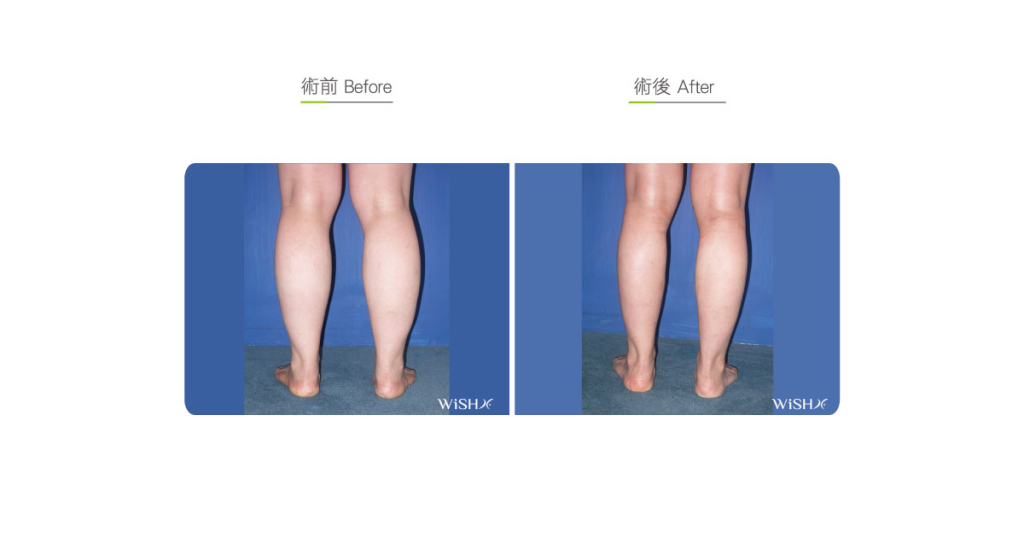Calf Liposuction
The slimness and shape of the calf is mainly determined by the skeletal and muscular structure. Subcutaneous fats, which are similar to back fats, are mostly superficial fats and account for less than 20% of calf hypertrophy. Therefore, liposuction only attains the limited results of calf reduction and should generally be combined with other surgeries such as nerve blocking or partial muscle resection to obtain complete results. At present, calf liposuction is mainly used to treat patients with congenitally thick legs or lower limb edema such as elephant or tubular legs. It utilizes on Ultra-Z liposuction to maximally remove superficial fats (particularly in the superior area of the ankle or posterior side of the calf) and sculpt the muscular curvature to achieve slim leg shapes. This surgery is conducted by making a 0.5-cm incision at the back of the knees and ankles superior and inferior to the calf. First, Dr. Chuang infuses hemostatics and painkillers and introduces an ultrasonic lipolysis tube to the subcutaneous layer to melt and lyse fats; then, various size of liposuction probes are inserted into the subcutaneous layer to remove fats. The liposuction area is primarily confined to the two-third region of the posterior calf, and attention should be paid to avoid liposuction near the shin at the anterior one-third region to avoid skin irregularity or depression. As this surgery is aimed at sculpting the leg shape rather than slimming effect, fats removed are generally not enormous, approximately 100–150 cc on average at either side. Patients should also wear elastic stockings for 2–3 months postoperatively before the results become stable.
Surgical conditions
Duration
- Type of anesthesia: General anesthesia
- Type of incision: A 0.5-cm incision at the superior part of the calf (behind the knee) and the lower part (ankle)
- Recovery: 5–7 days
- Removal of stitches: 7 days
General instructions
No food and water on the day of surgery
- Avoid running or lower limb work for 1 week postoperatively.
- Try to avoid standing for a long time for 1 month postoperatively to promote the alleviation of edema.
- Wear elastic stockings for the calf for 3 months postoperatively to help sculpt the leg shape.
Ideal candidates
- Patients with calf skin thicker than 1 cm
- Patients with elephant legs who have a predisposition to chronic calf edema
- Those with a hypertrophic calf like a tubular penrack
- Those with a poor leg curvature due to a thick calf and ankles
- Those with calf obesity and combined muscular thunder leg (the surgery should be conducted along with calf muscular reduction)
Possible complications
- Skin unevenness
- Calf depression
- Muscular line
- Pigmentation (temporary)
- Results short of expectation
Surgical advantages
-
The surgery is safe without a possibility of nerve or vessel injury.
-
It partially alleviates chronic calf edema.
-
It effectively sculpts the lower leg curvature.
-
It enhances the leg slimming effects of calf muscular reduction.
Surgical drawbacks
-
The amount of fats removed is relatively less, so the calf reduction effect may not be obvious.
-
Excess liposuction may aggravate muscular texture.
-
Poor circulation at the lower limbs (like varicose veins) may prolong the swelling or recovery period.
-
It is likely to cause skin unevenness or depression.


